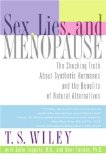 RSS FEED
RSS FEED
This is my journal of living with Migraine and other chronic illness. Trying to live well, to live a purposeful life, with chronic illness, since I don't get the choice of living one without it!
Spring & Hope
March 7th, 2010
Hope springs eternal in the human breast;
Man never Is, but always To be blest:
The soul, uneasy and confin’d from home,
Rests and expatiates in a life to come.
-Alexander Pope,
An Essay on Man, Epistle I, 1733
Hope springs. Spring and hope. Spring is sprung. Today was the second of two sunny, 50 degree plus days. The snow is finally melting away and snowdrops are blooming in the yard. Danny and I took a long walk, my second in two days, and talked about what we want to do in the garden this year. And with the improvement in my Migraines and my steady new work schedule, it’s more likely that I will be able to get out and do some of the work.
There’s plenty of yard clean-up to do, but our snow’s not all gone yet and the ground is mushy. We spent a while working on getting a large broken limb out of the tree overhanging our driveway – a limb that threatens to fall on our cars with every strong wind. A ladder, a pruning saw, Danny’s ingenuity and an apple-picker swung on a rope later, he pulled the monster down. It hit the ground with a resounding thud that made me very glad no car windshields were below it. Or human noggins either. What’s amazing is how alive I felt, and how enjoyable it can be to tackle a physical problem like this, out in the fresh air.
I don’t know how much we’ll get done of our ambitious plans – I still have a few days of Migraine black-out each month, and I am battling constant soreness from my fibromyalgia. Yesterday I was more active than I’ve been for a while – kitchen clean-up, multiple loads of laundry and a 40 minute walk around town. I ached all over and slept badly. But I set out to match yesterday’s activity level today – knowing that if I give in to the aches and stay inactive they’ll just get worse.
Danny said when we came in from the yard – “It’s a different kind of tiredness – it feels good.” I remember that feeling, but I don’t really experience it any more. All tiredness makes me ache all over, be it physical, mental, emotional, indoors or out. But my world does open up with the warmer weather. I feel like the whole world has expanded. I want to be out and doing, before New Jersey’s hot humid summer comes and shuts me down again.
To all of you with chronic illness – wishing you hope this spring, and that you may enjoy the fresh air and growing things. What do we live for, what pulls us forward, but sublime and ridiculous hope with each new day?
Tags: Alexander Pope, fibromyalgia, gardening, hope, Migraine disease, New Jersey, Spring
Posted in Musings | Comments (0)
Botox for Head Implosion, not Explosion?
February 17th, 2010
A new study of 18 Migraine sufferers reported in the Archives of Dermatology Monday indicates that Botox may be helpful for those who describe their pain as “crushing” or “eye-popping.” That’s an interesting new  distinction. So, not so good for those of us, like me, who walk around saying “My head explode!”
distinction. So, not so good for those of us, like me, who walk around saying “My head explode!”
It’s hard to say how significant a study of 18 patients is, and previous reports on Botox for Migraines have been mixed at best. This study reports an average reduction from 7 Migraines per month to 1 Migraine per month, among those who responded to the Botox. You can read a bit more about the study here: Does Botox Stop Some Migraines? in the Minneapolis – St. Paul Star Tribune. What really interests me, though, is the fact that the description of the pain itself is indicative of whether the Botox will help or not. Pain is so subjective, and so difficult to measure, it’s fascinating that there could be a correlation between how we experience the pain and the mechanics of our Migraines.
I’m imagining a time when you can describe your pain, and get a specific treatment for it. Head imploding? Try this. Head exploding? Try that. What about that one where little people with grapefruit spoons are trying to scrape your brain off the inside of your skull? I hate that one.
– Megan
Tags: Botox, migraine, Migraine treatment, pain
Posted in Current Affairs, Medicine, Musings | Comments (5)
Hormones, Migraines and Menopause
February 14th, 2010
Migraines happen when those of us with excitable nervous systems – nervous systems prone to Migraine –  experience a change in our external or internal environment that triggers the Migraine process. This doesn’t explain what causes Migraine, or why some of us have nervous systems that react like this. It just describes the process. Hormonal fluctuations are one of the internal changes that can trigger a Migraine. Migraines are not “caused” by hormonal fluctuations, but hormones can be a big factor for many Migraine sufferers. One theory about why more Migraine sufferers are female, by a proportion of 3 to 1, is that the fluctuations of our hormonal cycles make us more susceptible. Interestingly, up to puberty the numbers of male and female Migraine sufferers are more even; many more girls join the ranks with the onset of puberty.
experience a change in our external or internal environment that triggers the Migraine process. This doesn’t explain what causes Migraine, or why some of us have nervous systems that react like this. It just describes the process. Hormonal fluctuations are one of the internal changes that can trigger a Migraine. Migraines are not “caused” by hormonal fluctuations, but hormones can be a big factor for many Migraine sufferers. One theory about why more Migraine sufferers are female, by a proportion of 3 to 1, is that the fluctuations of our hormonal cycles make us more susceptible. Interestingly, up to puberty the numbers of male and female Migraine sufferers are more even; many more girls join the ranks with the onset of puberty.
It’s hard to generalize with this disease; people are triggered by so many different things. Some women don’t notice any particular effect of hormones on their Migraines, others seem to be only triggered by hormones, and for some hormones are one of a host of possible triggers. That said, it is common for women to experience an increase in Migraines during peri-menopause, the period of years leading up to menopause when their hormonal levels are changing, and often beginning to drop off.
I had a sharp increase in Migraines, as well as onset of fibromyalgia, and increase in IBS as I moved into peri-menopause. I have found a bio-identical, bio-mimetic hormone replacement therapy which I believe has helped my overall health quite a bit. I started the program about 4 years ago. It has not had a noticeable effect on the number of my Migraines but has definitely decreased their severity. It has given me more energy and stamina overall, which has helped keep the fibromyalgia fairly mild, I believe. It also did away completely with many symptoms of menopause that were troubling me – hot flashes, night sweats, anxiety, insomnia, vaginal dryness. The program I use is known as The Wiley Protocol.

T.S. Wiley is a cancer researcher who hit on this method of replacing hormones in a pattern that mimics the hormonal patterns of a normal menstrual cycle. Her book, Sex, Lies and Menopause explains in great detail the effects of hormones on our bodies, on aging, and how she developed her protocol.
As I understand it, pharmaceutical HRT (hormone replacement therapy) chemically creates molecules which are similar to, but not identical to, the hormones our bodies produce. If the pharma companies are not inventing a new substance, they can’t patent it or make much money from it, so you don’t find these hormones advertised widely. Bio-identical HRT chemically synthesizes the exact same molecule our bodies produce, so that when we use it our bodies treat it as if we had produced it ourselves. Bio-identical HRT is made by compounding pharmacists. There are many producers of bio-identical HRT, some of them prescribe a constant level of the hormones to be used all the time. The drastic side-effects and health complications that come with pharmaceutical HRT are caused, Wiley says, by the fact that these are not molecules our bodies recognize, as well as by the fact that the hormones are dosed at a constant level which is not normal for our bodies. Bio-identical HRT can also cause problems when dosed at a constant level.
What is different about Wiley’s program is that the hormones are not just bio-identical, they are “bio-mimetic.” Wiley invented a method of dosing the hormones so they mimic the menstrual cycle of a healthy 20 year-old woman. The theory is to recreate a time when we are biologically at our healthiest, and giving our bodies the ebb and flow that is normal for them. Some women have bad Migraines when they are younger, and bad menstrual Migraines throughout their lives. I don’t know if the Wiley protocol would help them with their Migraines. But if the Migraines began or drastically increased in menopause or peri-menopause, it makes sense to me to replace the hormone levels of a time when you didn’t have the Migraines! The drawback, I suppose, is that as long as you are on the protocol you will menstruate. There are women in their 80’s on it, getting periods. But I have found that my periods on the protocol are very regular and fairly painless. The horrid PMS and menstrual Migraines I got in my peri-menopause years are gone, as are the terrible cramps I had, both when I was young and again in recent years.
Wiley does suggest that Migraines can be treated by spreading the hormones more evenly throughout the day, instead of just in the usual morning and evening doses. I have not tried this – it makes a certain degree of sense, in evening out any hormonal fluctuations during the day. Hormones do not seem to be the only thing that triggers my Migraines, though. If you read Wiley’s book or visit the site you might get the impression that the protocol is a panacea for all problems of aging. I don’t know if I buy into it that far, and as I said it has not been a complete solution for my Migraines. It has definitely made a big difference for me, though, and you may want to investigate it as a useful component of your toolkit.
Neither T.S. Wiley nor the Wiley Protocol has given me any payment for reviewing these products. If you click on the link to the book and buy it from Amazon, however, I will receive a small referral fee.
Tags: bio-identical hormone replacement, Hormones, Menopause, migraine, Migraine triggers, T.S. Wiley
Posted in Books, Managing, Medicine | Comments (1)
Happy New Year!
February 12th, 2010
What? It’s 43 days into 2010!
 I know, but I haven’t posted since January 7th; I feel like I need to catch up with you all. Greetings from snow-bound New Jersey!
I know, but I haven’t posted since January 7th; I feel like I need to catch up with you all. Greetings from snow-bound New Jersey!
I just saw that Medical Assistants.Net listed me as “One of the Top 50 Health and Wellness Blogs to Watch in 2010.” If that’s the case, I’d better get writing!
It’s been a busy month and a half for me. I have returned to my professional roots and taken a half-time job as a lawyer. I love working with you all to help you manage your Migraines, but it’s not keeping me busy full-time. I’m lucky to have a good set of skills to return to, and a great firm owner who knows me, likes my work, and is very flexible about my health needs.
I haven’t missed a day for a Migraine yet, though I have to admit I’ve had a few let-down Migraines after busy days at work. I am adjusting to a new schedule. That takes some time for a Migraineur – our systems crave regularity, and tend to freak out when we change things up on them. It took a few weeks to build enough stamina to have energy left for the other things I do. I am very glad that my preventive medication works well for me, and that my years of practice in managing my Migraines have given me the breathing and relaxation skills to get me through.
When I left the practice of law in 2000 I thought I’d never be able to go back to the pace and demands without frequent Migraines. I’m happy to report that my Migraines haven’t increased at all. Even better, I seem to have a reputation around the office as a calm person and a calming influence. That would have shocked those who knew me a few decades ago! Learning to manage Migraines, to keep my system on even keel, has left me knowing not to sweat the small stuff, and yes, most things are small stuff.
I owe all my subscribers a newsletter, and I am backed up with a couple of book reviews I want to give you. I have some stories about medication allergies for you and some great new products to link to. The Migraine Support & Coaching Group is going well, and I’d love to have more of you to talk to in the meetings! I think I’ve got my new rhythm down enough to be back and talk to you more often.
I hope your winter is going well. Let me know how you’re doing!
– Megan
Tags: health and wellness blogs, let-down Migraine, managing life with migraine, Migraine preventive medication, migraine support group
Posted in Communicating, Managing, Weblogs | Comments (5)
Fibromyalgia – a New Context
January 7th, 2010
The context in which we look at an issue can make a huge difference in our way of perceiving and interacting with the issue. When I began exploring the on-line world of support for Migraineurs and chronically ill folks, I came very early upon Teri Robert’s site, Help for Headaches, and there on the site, she had this badge: 
I wondered at the time, was this really empowering, to emphasize having a disease? It is a disease, but we can have an impact on our own health by developing an awareness of our own systems, and learning to relax and calm their reactivity. I had spent some years learning that myself and that’s what I wanted to share with others.
The more I looked at it, though, the more I got Teri’s point. I realized that for the many of us who have had our condition minimized and scoffed at, the recognition that we have a disease is empowering. Our problems are real, and biologically based; our pain is real. We live with the consequences of having a hyper-reactive nervous system. For those of us who have wondered what was wrong with us, if we were crazy, if we were somehow bringing the pain upon ourselves, it is empowering to recognize that we have a disease, not just a headache! Starting from the context of a disease, we can learn about it, learn what impacts our disease for better or worse, learn to manage the disease, and to manage our life with the disease. Acceptance is the first step, and gives us a foundation to build on. It makes it possible to move forward. We can say, “Okay, I have this disease. Now what? What am I going to do about it?”
For over 15 years, since I was pregnant with my son in the fall of 1994, I have been living with fatigue, lassitude, body aches, on and off difficulty concentrating, frequent sinus infections, difficulty fighting off  disease, and, in the last 10 years, ever increasing Migraines. I have gone down many paths to address these issues. With regard to the Migraines, I learned a great deal about the disease, worked with doctors to find medication and supplement combinations that helped me, and learned to practice relaxation to calm my system. My Migraine frequency is down considerably. Not so the fatigue and general pain issues, however. I have tried many different nutritional regimens, and learned a lot about what foods are most helpful to my body. I have gone great lengths to balance my hormones, and have definitely seen an improvement in my overall health and stamina through doing that. No matter what I did, however, the fatigue and pain issues did not change much.
disease, and, in the last 10 years, ever increasing Migraines. I have gone down many paths to address these issues. With regard to the Migraines, I learned a great deal about the disease, worked with doctors to find medication and supplement combinations that helped me, and learned to practice relaxation to calm my system. My Migraine frequency is down considerably. Not so the fatigue and general pain issues, however. I have tried many different nutritional regimens, and learned a lot about what foods are most helpful to my body. I have gone great lengths to balance my hormones, and have definitely seen an improvement in my overall health and stamina through doing that. No matter what I did, however, the fatigue and pain issues did not change much.
Many people with Migraine also have Fibromyalgia, and as I got to know more people with Migraine I heard a lot about the other disease as well. My reaction for quite a while was, “Oh, I probably have that one too, but I don’t want to know about it.” It felt overwhelming to me to have to deal with another diagnosis. I practiced active avoidance. Then I saw Dr. Young at Jefferson Headache Center and he listened to me talking about my fatigue, and he pressed the Fibromyalgia tender points, and I gained a new context. Thanks, Dr. Young!
I’m not kidding with the thanks. It was just like Teri’s badge above, the pieces of a puzzle came together. I already knew that my central nervous system had some serious processing issues, well this was just another manifestation of that. In addition to having my neurons fire off and produce Migraines in reaction to certain stimuli, I have an increased reaction to pain and exertion. If I bang my elbow, the pain moves out in ripples from the point, increasing for a time like an echo in an echo chamber. If I expend more muscular energy than usual, my muscles ache for days as if I had the flu. If I am active and push myself either physically or mentally, I have a kind of fatigue that is beyond tired; it is the bone-weary exhaustion of someone who has been pushed beyond the limits of their endurance.
I have gained a lot from the context of having another disease – Fibromyalgia. I have gained a community of  fellow sufferers, who care, who understand, whose wisdom and experience are available to me. I have gained the relief of knowing that I am not lazy, or losing my mind, or fundamentally bad, I am a person with a(nother) disease. And this context helps me to find solutions. I know now that stretching helps, and I can push myself to stretch when my muscles hurt and I really don’t want to. I know that my fatigue is not something to fight or to cover over with caffeine, but that it is a signal to rest. I know that getting some gentle exercise each day, and gradually increasing my exertion, will help me. I know that there will be better and worse days, but that each day can be handled, one at a time.
fellow sufferers, who care, who understand, whose wisdom and experience are available to me. I have gained the relief of knowing that I am not lazy, or losing my mind, or fundamentally bad, I am a person with a(nother) disease. And this context helps me to find solutions. I know now that stretching helps, and I can push myself to stretch when my muscles hurt and I really don’t want to. I know that my fatigue is not something to fight or to cover over with caffeine, but that it is a signal to rest. I know that getting some gentle exercise each day, and gradually increasing my exertion, will help me. I know that there will be better and worse days, but that each day can be handled, one at a time.
I haven’t posted for a while, and I’m glad to say that my new Migraine preventive is helping a great deal. My Migraine frequency is down by about 60% over the past few months. The medication also helps to damp down my anxiety and makes me very sleepy. It seems to increase my REM sleep, which is a sleep stage that Fibromyalgia often steals away. Sleeping better definitely impacts the Migraines; it also makes me less fatigued and less anxious. So at the same time that I have taken on this new diagnosis, Fibromyalgia, I have seen some of its symptoms decrease.
I’m learning this one. It’s a listening to my body, to my inner sense of myself, in a new way. Similar to the way I already listened, a familiar tune but in a different key, perhaps. The biggest gain from the new context is another level of self-acceptance. I am not a bad person trying to be good; I’m just a sick person learning to be as well as possible.
Tags: disease management, fatigue, fibromyalgia, migraine
Posted in Communicating, Managing, Musings | Comments (0)
Blog Carnival Time: Holiday Stress
December 15th, 2009
Teri Robert is hosting the blog carnival this month at My Migraine Connection. There’s a great collection of  posts on caring for yourself such that you can actually enjoy the holidays. My contribution is just one post down on this page (unless you’re reading on Facebook, if you are, please hop over to Free my Brain). For the rest of the carnival, please go to December Migraine and Headache Disease Blog Carnival: Holiday Stress. And whatever else you do, remember to slow down and breathe!
posts on caring for yourself such that you can actually enjoy the holidays. My contribution is just one post down on this page (unless you’re reading on Facebook, if you are, please hop over to Free my Brain). For the rest of the carnival, please go to December Migraine and Headache Disease Blog Carnival: Holiday Stress. And whatever else you do, remember to slow down and breathe!
Tags: blog carnival, holidays
Posted in Tips & Techniques, Weblogs | Comments (0)
How do we Celebrate and Still take Care of Ourselves?
December 14th, 2009
 For a number of years, my husband and I hosted a big post-Christmas holiday gathering for my extended family. This gathering had gone on at my parents’ house for many years prior. Each of the smaller nuclear families (mine, my siblings’, aunt & uncle & cousins’) would have their own Christmas Day at home, and then sometime afterwards everyone would get together for a big collective meal and gift-giving. Since we all live several hours apart, this would generally turn into a weekend-long extravaganza, with many people sleeping over for several nights. The part where we were all together generally involved 14 – 22 people.
For a number of years, my husband and I hosted a big post-Christmas holiday gathering for my extended family. This gathering had gone on at my parents’ house for many years prior. Each of the smaller nuclear families (mine, my siblings’, aunt & uncle & cousins’) would have their own Christmas Day at home, and then sometime afterwards everyone would get together for a big collective meal and gift-giving. Since we all live several hours apart, this would generally turn into a weekend-long extravaganza, with many people sleeping over for several nights. The part where we were all together generally involved 14 – 22 people.
My family gets along well, and while some readers may roll their eyes at the thought of so many relatives gathered, it has been a largely joyous occasion. When my parents sold their big house and moved on to an apartment and then a retirement community, my sister took on hosting Thanksgiving and we took Christmas. We cut the expense, noise, tumult and confusion of the gift giving by drawing lots for gifts to adults, and cut the cooking difficulties by doing some degree of pot-luck.
But… I went on hosting these events some years beyond  when some family and friends were questioning my ability to do it. I have been living now for about 14 years with chronic illness, and when hosting big events, there have been predictable outcomes. I would wear myself out, either with clean-up and preparation, or with running around taking care of the guests in my home, or with cooking, or with trying to keep up with the mess generated by my husband’s enthusiastic (delicious) and whirlwind cooking.
when some family and friends were questioning my ability to do it. I have been living now for about 14 years with chronic illness, and when hosting big events, there have been predictable outcomes. I would wear myself out, either with clean-up and preparation, or with running around taking care of the guests in my home, or with cooking, or with trying to keep up with the mess generated by my husband’s enthusiastic (delicious) and whirlwind cooking.
My challenged immune system would hand me an illness or infection a majority of the time. Or my sensitive nervous system would react to the added stress and noise and confusion by hitting me with a major Migraine. Or both. I would try to compensate by planning better, systematizing everything. This would both create more work for me and make my husband crazy due to my micro-managing. And then there were the crowds themselves for gift-giving or major meals, where I never do well. My head would be spinning in no time, my anxiety level would hit the roof with the noise and over-stimulation, and I would become cranky and short with people. I would spend some part of the celebration closed up in a room by myself in pain, and inevitably the guests would have to pick up a lot of the work it took to get through the weekend.
We moved four years ago to our current home, which is about 35% smaller than our last home. We did a  huge renovation on this house and part of our planning was around how to accommodate a big crowd for Christmas. The time we have been in this house, however, has been the same time period as the worst of my chronic Migraines. We hosted one Christmas two months after moving in, with many things still in boxes and the construction not quite complete. We hosted one other year. When we put many tables together to sit down for a meal, you could not leave your place at the table without 2 or 3 other people getting up as well. When we tried to open presents in the front room with the Christmas tree, some people had to stand in the next room and look on. Another year we tried doing an abbreviated gathering when some family members were away, only inviting a few others. I had mixed feelings and was not clear with everyone about this, and hurt the feelings of those left out.
huge renovation on this house and part of our planning was around how to accommodate a big crowd for Christmas. The time we have been in this house, however, has been the same time period as the worst of my chronic Migraines. We hosted one Christmas two months after moving in, with many things still in boxes and the construction not quite complete. We hosted one other year. When we put many tables together to sit down for a meal, you could not leave your place at the table without 2 or 3 other people getting up as well. When we tried to open presents in the front room with the Christmas tree, some people had to stand in the next room and look on. Another year we tried doing an abbreviated gathering when some family members were away, only inviting a few others. I had mixed feelings and was not clear with everyone about this, and hurt the feelings of those left out.
Last year, with tears and soul searching, we bowed out of hosting. We went to my sister’s for two big holiday gatherings, and we’ll be doing it again this year. My home will stay quiet; our Christmas day will be simple and relaxed; we will be with family in a less stressful space. But… I miss having my family here. I miss sharing my life, my things, my space with the people I love. In answer to the title of this post, this is what we are doing to celebrate and still have me take care of myself. But… I’m running 2 weeks at a time without a Migraine these days, and have more energy, and I have to admit I am thinking about how to take the whole thing on again – maybe next year. We’ll see.
How do you celebrate and still take care of yourself?
– Megan
Tags: chronic illness, holidays, Migraines, self care, Stress
Posted in Communicating, Managing, Musings | Comments (1)
Support the Future of Headache Medicine in the U.S.
December 9th, 2009

 The AHDA (Alliance for Headache Disorders Advocacy) makes us aware of an opportunity to make a difference in the future of headache medicine. Please take action today to support the the Klobuchar / Collins Amendment to the Senate Health Care Reform Bill. Apparently the bill sets up bonus Medicare payments to doctors from certain primary care specialties. This will give an incentive and encourage doctors to enter and stay in primary care practice.
The AHDA (Alliance for Headache Disorders Advocacy) makes us aware of an opportunity to make a difference in the future of headache medicine. Please take action today to support the the Klobuchar / Collins Amendment to the Senate Health Care Reform Bill. Apparently the bill sets up bonus Medicare payments to doctors from certain primary care specialties. This will give an incentive and encourage doctors to enter and stay in primary care practice.
The AHDA tells us:
Physicians who specialize in headache medicine provide primary or principal care for patients with headache disorders and more than 90% of them are neurologists. Unfortunately, neurologists have been unaccountably left out of eligibility for these bonuses. If the Health Reform Bill passes with the incentive program as it is written, it will significantly undermine the ability to recruit and retain doctors to the field of headache medicine. Headache doctors are already very scarce, and it will become that much harder to find one.
Senators Klobuchar of Minnesota, Collins of Maine and Brown of Ohio, created a bipartisan amendment to the bill that would add neurologists to the Medicare incentive program. The AHDA is backing the amendment along with other groups that support sufferers from neurological diseases, including the American Academy of Neurology, the ALS Association, the Parkinson’s Action Network, the Epilepsy Foundation, the Brain Injury Association of America, the Alzheimer’s Foundation of America, and the National Multiple Sclerosis Society.
In five minutes or less, you can add your voice to support for the Klobuchar / Collins Amendment and help encourage doctors to go into and stay in headache medicine. Just go to the AHDA’s special dedicated page: Email Your Senators to Support the Klobuchar/Collins Amendment. They’ve designed it to be really easy – please just take a few minutes and do it now! That is all.
– Megan
Tags: Alliance for Headache Disorders Advocacy, headache disorders, headache specialists, health care reform
Posted in Advocacy, Current Affairs, Medicine | Comments (0)
Reducing Holiday Stress – Blog Carnival
December 6th, 2009
 The theme for the December 2009 Headache & Migraine Disease Blog Carnival is “Advice on & experiences with reducing holiday season stress.” This will be the Blog Carnival’s second anniversary issue, so please consider joining in! I’ve missed the carnival myself for the past few months but I’m planning a post this time. We all know that Migraines can make our holidays much harder – let’s share how we cope! To participate just use the form on the carnival web site or contact Diana Lee over at Somebody Heal Me.
The theme for the December 2009 Headache & Migraine Disease Blog Carnival is “Advice on & experiences with reducing holiday season stress.” This will be the Blog Carnival’s second anniversary issue, so please consider joining in! I’ve missed the carnival myself for the past few months but I’m planning a post this time. We all know that Migraines can make our holidays much harder – let’s share how we cope! To participate just use the form on the carnival web site or contact Diana Lee over at Somebody Heal Me.
– Megan
Tags: blog carnival, holidays, Migraines, stress management
Posted in Managing, Weblogs | Comments (1)
Triptans in Pregnancy
December 3rd, 2009
Teri Robert at My Migraine Connection reports today on a study on use of sumatriptan (Imitrex and generics)  and naratriptan (Amerge) to abort Migraines during pregnancy. The article is well worth a read. Migraines, Triptan Safety, and Pregnancy. The study is preliminary, but indicates that the overall risk of birth defects is not raised significantly (from 4% general risk to 4.6% risk in the study) with use of sumatriptan. There was not enough data to draw a conclusion as to use of naratriptan. This is potentially good news for pregnant Migraineurs. Although the results are preliminary, it’s well worth discussing with your doctor if you are experiencing Migraines during pregnancy.
and naratriptan (Amerge) to abort Migraines during pregnancy. The article is well worth a read. Migraines, Triptan Safety, and Pregnancy. The study is preliminary, but indicates that the overall risk of birth defects is not raised significantly (from 4% general risk to 4.6% risk in the study) with use of sumatriptan. There was not enough data to draw a conclusion as to use of naratriptan. This is potentially good news for pregnant Migraineurs. Although the results are preliminary, it’s well worth discussing with your doctor if you are experiencing Migraines during pregnancy.
– Megan
Tags: Migraines, pregnancy, triptans
Posted in Current Affairs, Medicine | Comments (0)
That disclaimer thing...
Remember: nothing we do here is medical advice or treatment or is a substitute for medical advice or treatment. Get competent medical advice to learn more about your migraines, possible treatments and risks.
What's New on Migraine Support Group Coaching |
Recent Comments
- on Calling all Redheaded Migraineurs
- on No, You’re not Crazy, You just Have Migraines
- on No, You’re not Crazy, You just Have Migraines